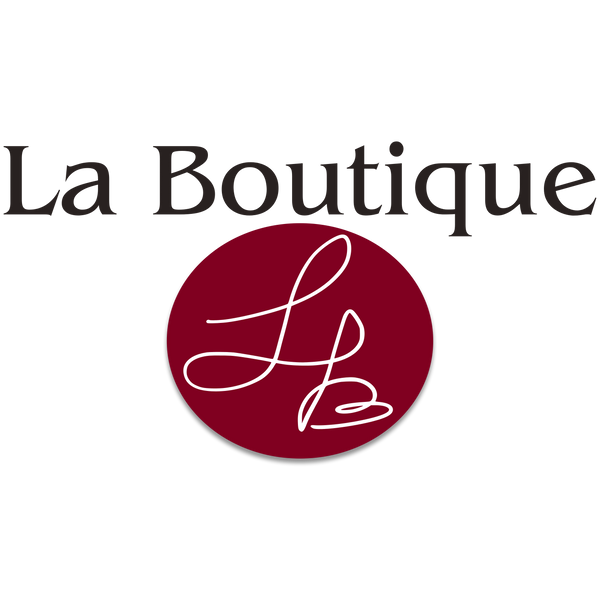Especially if you're into anything that has to do with sustainability, you've likely encountered the term 'upcycling'. This term is steadily gaining popularity recently.
But what does it actually mean? How is it different from its cousin 'recycling'? And why is it so beneficial for a healthy planet?
Well, we’ve got you covered, because in this blog post we will discuss everything you need to know about upcycling, and share about one of our amazing creators at La Boutique that specializes in upcycling.
What Upcycling Entails
Upcycling is often described as the practice of converting materials that would normally go to waste, in something re-usable and valuable.
With other words, it contributes to a circular economy, as these items are given a new life, instead of being discarted.
What upcycling and recycling have in common is that they both prevent waste getting to the landfills. However, with upcycling, you are increasing the value of the item, in contrary to recycling, which keeps the value of the item at the same level.
Let’s illustrate this with an example: Let’s say you receive some letters in the mail, and instead of throwing them away, you decide to do something more useful with them.
You could recycle the letters by sending them to your local recycling center so that can be re-used as recycled paper. The value stays the same, since it will be continued to be used as paper.
However, when you take the letters and fold them to create a biodegradable flower pot, this would be called upcycling, since you’re using simple materials that would otherwise be thrown away, and give them a new life as an item of increased value.
Benefits of upcycling
The benefits of upcycling are quite straightforward.
1) Reduce landfill waste
One of the most immediate and tangible benefits of upcycling is its power to reduce the waste from the landfills. Every item that gets upcycled is an item that doesn't end up in a landfill.
Consider the insane amount of waste we generate daily. From coffee cup lids to shopping bags, a lot of these end up cluttering huge amounts of land. This is a significant contributor to environmental degradation, disrupting habitats and polluting waterways.
By choosing to upcycle, we actively participate in reducing this landfill load. Moreover, it's a fun and imaginative way to deal with waste, one that adds value rather than degrading our surroundings.
2) There’s no need to use new (natural) resources
Upcycling also makes a tremendous impact by saving natural resources. When we repurpose items, we reduce the need to extract, refine, and process new materials.
That means fewer trees cut down for wood, less petroleum extracted for plastic, and less energy used to produce and transport these materials.
By reusing what's already there, we help preserve our natural ecosystems, conserve biodiversity, and keep the natural balance intact. Plus, this approach creates a loop that keeps materials in use for much longer, providing a solution that's not just temporary but sustainable in the long run.
3) Saving on carbon emissions
Reducing carbon emissions is another significant advantage of upcycling. Every product we use has a 'carbon footprint' - the total amount of greenhouse gases produced to create, use, and dispose of it.
By extending the life of an item through upcycling, we essentially decrease the demand for new products.
This in turn lowers the overall carbon emissions associated with manufacturing, transportation, and ultimately, disposal of these items.
Introducing Zitvlak, specialist in upcycling
Now let's talk about one of our amazing creators at La Boutique, Karen, who runs an amazing project called Zitvlak. Karen is all about turning old jeans into new creations.
Everything she designs and creates is unique, one hundred percent local and circular.
She has been involved with clothing throughout her entire working life. She makes and designs costumes for film, theater, opera, drama, and musicals. In addition, she has worked as a freelance tech designer in the fashion industry. Up close, she saw how great the waste in the clothing industry is.
That's how the idea of upcycling old jeans came about. She started with poufs and stools, hence the name Zitvlak.
During the coronavirus pandemic, she had more time and started to create sweaters and bags from discarded jeans and sweaters. She even lines the bags with fabric from old shirts.
Karen is picky about the material she uses: she pays attention to the color, how it's been washed, and the quality of the fabric.
She really likes working with sturdy cotton jeans. Everything she makes is one of a kind, totally local, and circular, which means it's not eating up loads of energy.
In thrift stores and vintage shops, people are starting to catch on to the idea of upcycling. But we're not quite there yet, and lots of 'fast fashion' is still being made.
However, through Zitvlak, Karen is showing us how we can turn old clothes into something new and earth-friendly.
Some of Zitvlak's upcycled products


Handmade upcycled sweater grey/yellow

Upcycled handmade bag. Denim/seapaint detail
Let's Chat!
Have you heard of upcycling before? Let us know in the comments down below!

